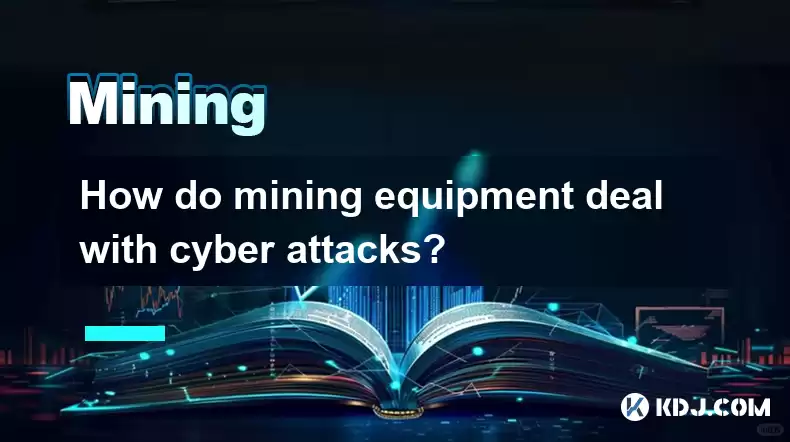-
 Bitcoin
Bitcoin $117600
2.11% -
 Ethereum
Ethereum $3907
6.13% -
 XRP
XRP $3.288
9.68% -
 Tether USDt
Tether USDt $1.000
-0.01% -
 BNB
BNB $784.8
2.00% -
 Solana
Solana $174.3
3.60% -
 USDC
USDC $0.9997
-0.03% -
 Dogecoin
Dogecoin $0.2220
8.04% -
 TRON
TRON $0.3379
0.01% -
 Cardano
Cardano $0.7829
5.46% -
 Stellar
Stellar $0.4348
8.84% -
 Hyperliquid
Hyperliquid $40.50
6.38% -
 Sui
Sui $3.757
7.22% -
 Chainlink
Chainlink $18.41
10.06% -
 Bitcoin Cash
Bitcoin Cash $581.6
1.91% -
 Hedera
Hedera $0.2586
5.37% -
 Avalanche
Avalanche $23.30
4.67% -
 Ethena USDe
Ethena USDe $1.001
0.01% -
 Litecoin
Litecoin $122.0
2.62% -
 UNUS SED LEO
UNUS SED LEO $8.972
-0.23% -
 Toncoin
Toncoin $3.338
1.14% -
 Shiba Inu
Shiba Inu $0.00001282
3.76% -
 Uniswap
Uniswap $10.38
6.88% -
 Polkadot
Polkadot $3.852
4.63% -
 Dai
Dai $1.000
0.02% -
 Bitget Token
Bitget Token $4.463
2.29% -
 Monero
Monero $263.6
-7.22% -
 Cronos
Cronos $0.1496
4.78% -
 Pepe
Pepe $0.00001106
4.91% -
 Aave
Aave $284.3
8.09%
How do mining equipment deal with cyber attacks?
Cryptocurrency mining demands robust security: physical safeguards against theft, strong software & network security (firewalls, updates, strong passwords), decentralized pools for resilience, and crucial data backup & disaster recovery plans.
Mar 19, 2025 at 03:21 pm

Key Points:
- Mining equipment is vulnerable to various cyberattacks, targeting both the hardware and the software controlling it.
- Physical security measures are crucial to protect against theft and unauthorized access.
- Software security relies on strong passwords, regular updates, and robust antivirus/antimalware solutions.
- Network security is paramount, requiring firewalls, intrusion detection systems, and secure network configurations.
- Decentralized mining pools can offer some protection against single points of failure and attacks.
- Regular backups and disaster recovery plans are essential to mitigate data loss.
How Do Mining Equipment Deal With Cyber Attacks?
Cryptocurrency mining hardware, while seemingly simple, presents a compelling target for cyberattacks. These attacks aim to steal cryptocurrency, disrupt mining operations, or gain control of the mining equipment for malicious purposes. Understanding the vulnerabilities and implementing robust security measures is paramount.
Physical Security:
The first line of defense is physical security. This involves securing the location where mining equipment is housed. This includes using robust locks, surveillance systems (CCTV), and potentially employing security personnel. Protecting against theft is crucial as stolen miners can be used for illicit activities or simply resold. Access control measures should restrict entry to authorized personnel only. Consider environmental protection as well, preventing damage from flooding or fire.
Software Security:
The firmware and operating systems running on mining equipment are vulnerable to malware and exploits. Regular updates are essential to patch known vulnerabilities. Strong, unique passwords should be used for all accounts and systems associated with the mining operation. Employing robust antivirus and anti-malware software is crucial for detecting and removing malicious code. Regular security audits of the software can help identify and address potential weaknesses.
Network Security:
Mining equipment typically connects to a network, making it vulnerable to network-based attacks. A strong firewall is essential to filter out malicious traffic and prevent unauthorized access. Intrusion detection systems (IDS) can monitor network activity for suspicious patterns, alerting administrators to potential attacks. Using VPNs (Virtual Private Networks) can enhance security by encrypting network traffic. Regularly reviewing network logs can help identify unusual activity.
Decentralization and Pool Security:
Mining pools offer a degree of protection. While a single miner is vulnerable, a large pool diversifies risk. An attack targeting one miner within the pool has minimal impact on the overall operation. However, it's important to choose reputable and secure mining pools with a strong track record. Always research the pool's security practices before joining.
Data Backup and Disaster Recovery:
Data loss can be devastating for mining operations. Regular backups of configuration files, mining software, and any relevant data are essential. A comprehensive disaster recovery plan should be in place to ensure that mining operations can resume quickly in the event of a significant security incident or equipment failure. This plan should outline procedures for restoring data and equipment.
Monitoring and Alerting:
Real-time monitoring of mining equipment and network activity is crucial. This involves using monitoring tools to track performance metrics, identify anomalies, and detect potential security breaches. Setting up alerts for suspicious activity, such as unusual network traffic or unexpected drops in mining performance, can enable swift responses to threats. This proactive approach minimizes potential damage.
Regular Security Audits:
Regular security audits should be conducted to assess the overall security posture of the mining operation. These audits should evaluate physical security measures, software security practices, network security configurations, and data backup procedures. Identifying vulnerabilities and addressing them proactively is key to maintaining a secure environment. Third-party security audits can provide an unbiased assessment.
Hardware Security:
Beyond software, the hardware itself can be a target. Tamper-evident seals can help detect unauthorized access to mining hardware. Regular physical inspections can also identify signs of tampering. Consider using hardware security modules (HSMs) for sensitive cryptographic operations to add an extra layer of protection. Proper grounding and surge protection can safeguard against physical damage.
Advanced Threats:
More sophisticated attacks may involve exploiting vulnerabilities in the mining software or firmware, potentially allowing attackers to remotely control the mining equipment. This necessitates a multi-layered approach to security, incorporating both preventive and detective controls. Staying up-to-date on the latest security threats and vulnerabilities is crucial for mitigating these risks.
Frequently Asked Questions:
Q: What are the most common cyberattacks targeting mining equipment?
A: Common attacks include malware infections designed to steal mining profits, denial-of-service attacks disrupting mining operations, and attempts to gain remote access for control. Theft of the physical hardware is also a significant concern.
Q: How can I protect my mining equipment from malware?
A: Use reputable antivirus/antimalware software, keep the operating system and firmware updated, and employ strong passwords. Regular security scans are also essential.
Q: What is the role of network security in protecting mining equipment?
A: Network security involves using firewalls, intrusion detection systems, and secure network configurations to prevent unauthorized access and malicious traffic. VPNs can enhance security by encrypting network communication.
Q: What are the benefits of using a mining pool from a security perspective?
A: Mining pools distribute risk; an attack on one miner has a less significant impact on the overall operation compared to solo mining. However, selecting a reputable pool with strong security practices is essential.
Q: How important is data backup and disaster recovery for mining operations?
A: Data backups are crucial to mitigating data loss due to attacks or equipment failure. A comprehensive disaster recovery plan ensures business continuity. This should include offsite backups and restoration procedures.
Disclaimer:info@kdj.com
The information provided is not trading advice. kdj.com does not assume any responsibility for any investments made based on the information provided in this article. Cryptocurrencies are highly volatile and it is highly recommended that you invest with caution after thorough research!
If you believe that the content used on this website infringes your copyright, please contact us immediately (info@kdj.com) and we will delete it promptly.
- Cold Wallet Crypto in 2025: The Future is Now, Ya'll
- 2025-08-08 05:10:13
- MAGACOIN, SOL, and ADA: A Tale of Shifting Tides in Crypto
- 2025-08-08 05:10:13
- SHIB Price, PEPE, and the Memecoin Supercycle: Who Will Reign Supreme?
- 2025-08-08 05:50:12
- Pudgy Penguins Price Prediction: Google Trends & Breakout Signals
- 2025-08-08 05:50:12
- UAE Crypto Regulation: SCA and VARA Unite to Streamline the Future of Digital Assets
- 2025-08-08 05:55:48
- MAGACOIN Finance: The Presale Phenomenon Rocking the Crypto World
- 2025-08-08 05:55:48
Related knowledge

What is "proof-of-work" and how does it relate to mining?
Aug 07,2025 at 02:03pm
Understanding the Concept of Proof-of-WorkProof-of-work (PoW) is a consensus mechanism used in blockchain networks to validate transactions and secure...

What are the differences between mining on Windows vs. Linux?
Aug 06,2025 at 11:29pm
Overview of Cryptocurrency Mining PlatformsCryptocurrency mining involves using computational power to solve complex cryptographic puzzles and validat...

How to use an old computer for cryptocurrency mining?
Aug 07,2025 at 12:42pm
Understanding the Feasibility of Using an Old Computer for MiningUsing an old computer for cryptocurrency mining may seem outdated, but it is still te...

Can you mine cryptocurrency using solar power?
Aug 07,2025 at 12:00am
Understanding the Basics of Cryptocurrency MiningCryptocurrency mining involves validating transactions on a blockchain network by solving complex cry...

How to build a mining rig inside a PC case?
Aug 06,2025 at 11:01pm
Understanding the Basics of a Mining Rig in a PC CaseBuilding a mining rig inside a PC case involves transforming a standard computer chassis into a d...

What are the best cryptocurrencies to mine with an ASIC?
Aug 08,2025 at 01:22am
Understanding ASIC Mining and Its Role in CryptocurrencyASIC stands for Application-Specific Integrated Circuit, a specialized hardware designed to pe...

What is "proof-of-work" and how does it relate to mining?
Aug 07,2025 at 02:03pm
Understanding the Concept of Proof-of-WorkProof-of-work (PoW) is a consensus mechanism used in blockchain networks to validate transactions and secure...

What are the differences between mining on Windows vs. Linux?
Aug 06,2025 at 11:29pm
Overview of Cryptocurrency Mining PlatformsCryptocurrency mining involves using computational power to solve complex cryptographic puzzles and validat...

How to use an old computer for cryptocurrency mining?
Aug 07,2025 at 12:42pm
Understanding the Feasibility of Using an Old Computer for MiningUsing an old computer for cryptocurrency mining may seem outdated, but it is still te...

Can you mine cryptocurrency using solar power?
Aug 07,2025 at 12:00am
Understanding the Basics of Cryptocurrency MiningCryptocurrency mining involves validating transactions on a blockchain network by solving complex cry...

How to build a mining rig inside a PC case?
Aug 06,2025 at 11:01pm
Understanding the Basics of a Mining Rig in a PC CaseBuilding a mining rig inside a PC case involves transforming a standard computer chassis into a d...

What are the best cryptocurrencies to mine with an ASIC?
Aug 08,2025 at 01:22am
Understanding ASIC Mining and Its Role in CryptocurrencyASIC stands for Application-Specific Integrated Circuit, a specialized hardware designed to pe...
See all articles

























































































